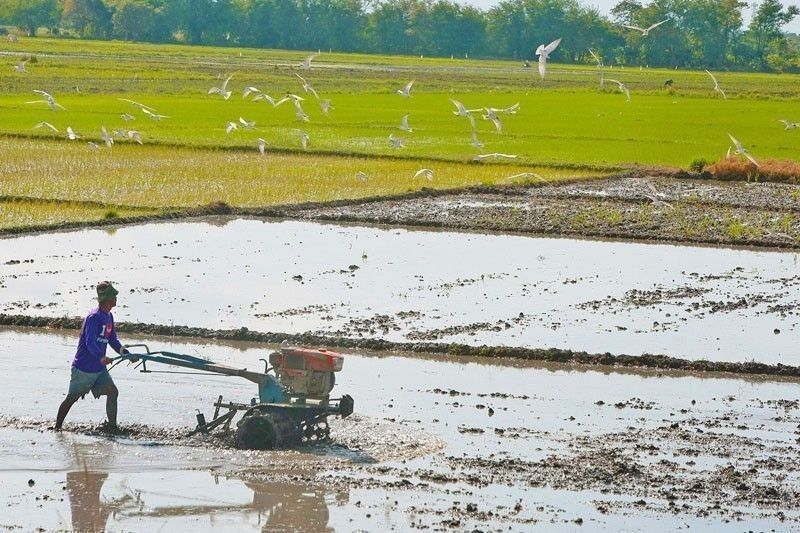Typhoons foil agriculture's rally as pandemic saving grace

MANILA, Philippines (UPDATE 1:46 p.m., Jan. 27) — The economy’s lone white knight last year succumbed to the combined wrath of typhoons and uncontrolled outbreak of swine fever, crashing with the rest to its weakest performance in 4 years.
Once a pandemic bright spot, farm output shrank 3.8% year-on-year in the fourth quarter, worse than 0.1% contraction posted in the same period in 2019 and 0.7% expansion in the third quarter, the Philippine Statistics Authority (PSA) reported Wednesday.
For the entire 2020, farm output sagged 1.2% year-on-year, a turnaround from 0.3% growth recorded in the preceding year and the first decline since 2016.
The government had hoped to grow the sector by 1% last year and for a while, it appeared that goal was achievable. That was until five succeeding cyclones slammed through farmlands of Luzon in October, reducing harvests that are now pushing consumer prices up.
Add to that the prevailing African swine flu that is yet to get under control and Michael Ricafort, chief economist at Rizal Commercial Banking Corp., said there was unlikely a last-minute economic boost from agriculture.
“This could be a drag to the fourth quarter (gross domestic product) data,” he said in a text message. Full-year 2020 GDP report would be released Thursday morning.
But Agriculture Secretary William Dar chose to be optimistic and characterized last year's farm performance as "resilient" and a "silver lining" to the crumbling economy that plunged 10% in the first 3 quarters. "(The) country's agriculture and fishery sector has remained pliant and resilient, facing head on and surmounting the huge challenges last year," he said in a statement.
Historically, agriculture has contributed about a tenth of GDP and employed about a quarter of Filipino workers, but advancement in other economic sectors had left behind the farm industry that the Duterte administration is now struggling to revive.
Before last year, gains have been minimal and a 2% farm output growth was eventually abandoned despite rice, the country's main staple, getting a necessary boost from the rice liberalization law that officials said is now keeping supplies stable through bigger imports. Indeed, crops were the lone grower last year, expanding 1.5% year-on -year despite a 0.4% decline in the final quarter.
Left behind
As it appears, that prevented a deeper slump for the entire sector since crops represented 57.9% of local production. Yet other farm segments also showed they needed saving from their own unique challenges as they continued to trail behind.
For instance, ivestock remained the biggest drag to agriculture last year, a sign of the lingering impact of the African swine fever on hog supplies. Pork production fell 13.8% annually in the fourth quarter because of the outbreak. For the entire 2020, livestock production collapsed 7.4%, data showed.
As a long-term fix, Dar said cities and provinces were instructed to monitor hog raises, while a swine repopulation is underway to help bridge the 4 million metric ton gap in supply. A similar strategy was laid out for chickens after poultry production dropped 5.5% in the fourth quarter and 3.8% for the entire year.
Meanwhile, fisheries went down by a smaller 4.7% in the final 3 months of 2020, with yearend production declining 1.2%.
Cid Terosa, senior economist at University of Asia & the Pacific, believes supporting agriculture this year would accelerate a warranted economic rebound from the health crisis, while restoring jobs. Dar targets 2.5% growth this year.
“Yes, agriculture can continue to boost the momentum of the economic recovery this year since it directly responds to the most immediate need of people to nourish themselves amid the pandemic,” Terosa explained in a text message.
“Since agriculture is labor- intensive, it has the capacity to create additional jobs and household income. The potential of agriculture to be a key sector in the middle of a pandemic, however, can be blunted by natural disasters, poor infrastructure, and weak logistics,” he added.
Editor's note: Included Agriculture Secretary William Dar's statements
- Latest
- Trending

























